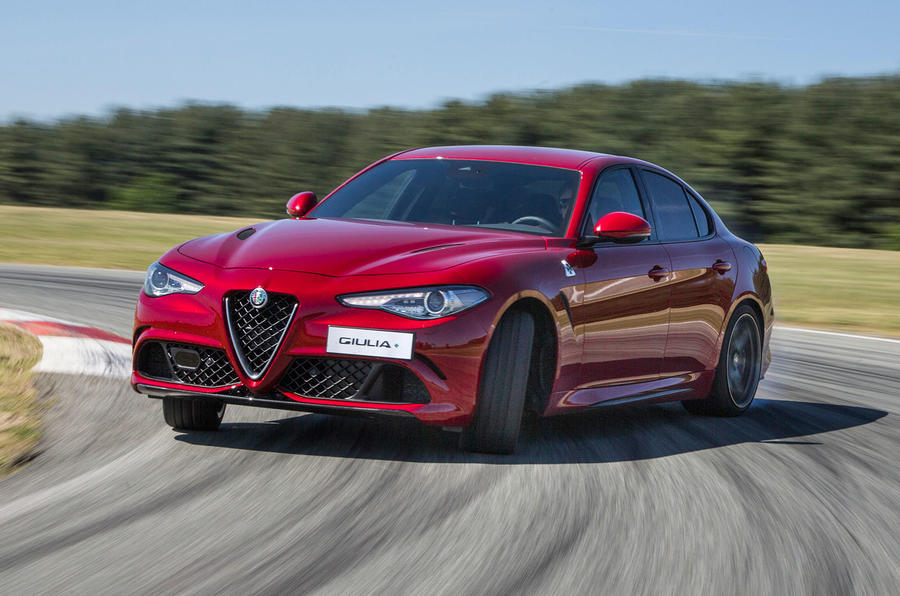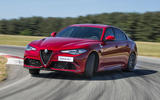The Alfa Romeo Giulia Quadrifoglio, or Giulia Cloverleaf to us linguistic imperialists who still prefer Venice and Florence to Venezia and Firenze, is an all-new sports saloon from the people who brought you the original Giulia, Alfasud and 75 – handling greats, all.
There has been regrettably little from Alfa with which keen drivers might indulge themselves since, of course. Which makes this a bit of a watershed car for the Italian firm, one to give us reason to feel excited by the Alfa brand again and to begin a long reputational rebuilding process.
This company can rightly claim to have made some of the best-handling sports cars and saloons in the world in its pomp, and it has ambitions to do so again.
The Cloverleaf is the headline version of the all-important Giulia saloon and standard-bearer for Alfa’s new philosophy in taking on the likes of Audi, BMW and Mercedes.

The car is its first new big-volume model in more than 20 years to be driven by its rear wheels and it also has a powerful and innovative engine and a class-leading power-to-weight ratio – all of which, Alfa hopes, will add up to a convincing selling point. We’re assured to expect the same from any Giulia compared to its German peers, petrol or diesel-powered.
Made predominantly of high-strength steel, the Giulia’s platform is modular and will also be used on larger models coming down the pipeline in future. Aluminium wings and doors and a carbonfibre bonnet and roof keep the Cloverleaf’s kerb weight down. Double wishbone suspension is used up front while a multi-link system serves at the rear, in both cases with aluminium subframes and chassis arms. ZF Sachs continuously variable dampers feature as standard.
Drive comes from a new 2.9-litre twin-turbocharged V6 petrol engine that’s ‘inspired’ by sister brand Ferrari’s latest crop of turbo V8s, but which Alfa insists is actually unrelated to those engines in structural terms.
With an aluminium head and block, a 90deg bank angle, oversquare cylinders, a cross-plane crankshaft, direct fuel injection and cylinder shutdown technology, it produces maximum outputs of 503bhp and 443lb ft and spins to 7000rpm.
Power finds its way to the road via a carbonfibre propshaft, an eight-speed torque-converter automatic gearbox and an active torque-vectoring rear drive module with electronically controlled clutches on either side of the differential.






















































Add your comment